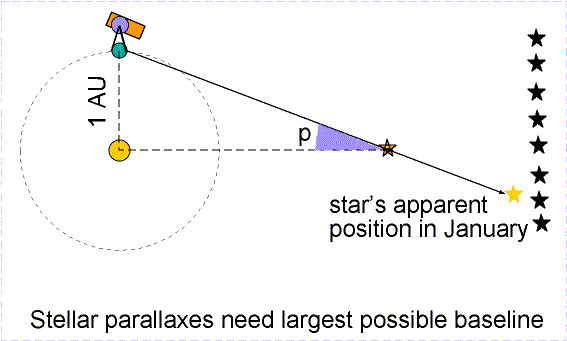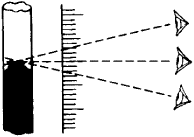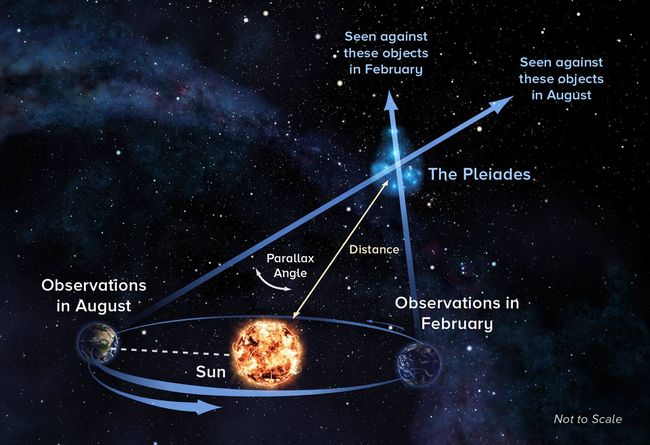

German mathematician and astronomer Friedrich Wilhelm Bessel (1784 –1846) in Germany, Scottish-South African astronomer Thomas James Henderson (1798 –1844) in South Africa, and Baltic-German astronomer Friedrich Georg Wilhelm von Struve (1793 –1864) in Russia measured the parallaxes of the stars 61 Cygni, Alpha Centauri, and Vega, respectively.įrom the ground, astronomers are now able to measure accurately parallaxes for only about 1,000 stars that are within 20 parsecs of the sun. When astronomers finally managed to measure a parallax, it turned out that Copernicus was right.Īstronomers did not succeed in measuring a parallax angle until 1838, when three astronomers working independently measured the parallaxes of three different stars. Copernicus countered rather simply by stating that the stars were much farther away than anyone had ever imagined, so the parallax was too small to observe. However, no such parallaxes had been observed. At the time, one of the arguments proposed against the Copernican view was that there should be a heliocentric parallax if the sun was indeed the center of the solar system. In the sixteenth century, Polish astronomer Nicolaus Copernicus (1473 –1543) proposed that Earth and planets orbited the sun. The distance to a star in parsecs is then simply 1 divided by the parallax angle measured in seconds of arc. One parsec is 206,265 times the distance between Earth and the Sun, 3.086 × 10 13 kilometers, or 3.26 light-years (where one light-year is the distance that light travels in vacuum in one year). A parsec is the distance to a star that has a parallax angle of exactly one second of arc. To simplify this calculation astronomers use a distance unit called a parsec (short for parallax-second). Once this angle is measured, the distance between the sun and the star is the Earth-sun distance divided by the tangent of the parallax angle. This definition is the same as the apparent motion that would be observed if the two observation points were the sun and Earth. The parallax angle is defined as one half of the apparent angular motion of the star as Earth orbits from one side of the sun to the opposite side. Measuring such small angles is obviously difficult, but astronomers have managed to overcome the difficulties, detecting parallax for the first time in 1838. At a distance of 3 mi (5 km), a quarter will have an angular diameter of roughly 1 second of arc. A second of arc is 1/3600th of a degree (1 °= 60 minutes of arc= 3,600 seconds of arc, 1 minute of arc= 60 seconds of arc). The closest star to the sun, Proxima Centauri, has a parallax angle of less than 1 second of arc. For even nearby stars these angles are quite small.

Closer stars will have a larger parallax.Īstronomers measure the parallax in the form of an angle. This parallax, when combined with the principles of geometry and trigonometry, can be used to find the distance to stars that are relatively close.

The closer the star, the larger will be its apparent motion. The parallax effect is an apparent motion caused by the motion of the observation point (either to the other eye or to the opposite side of the sun). Note that the star (like the thumb) is not really moving. The nearby star appears to move with respect to the more distant background stars. Thus, a parallax is any apparent shift in the position of an object caused by a change in the observation position.Īs Earth orbits the sun, astronomers can observe a nearby star at six-month intervals with Earth on opposite sides of the sun. Because the distance estimates require observation from two points, people who have lost an eye will lack this depth perception. The brain subconsciously uses information from both eyes to estimate distances. This apparent motion (its only apparent because the thumb did not really move) is called the parallax. Now move the thumb closer to the face and notice how this effect increases as the distance between the eyes and thumb decreases. Alternately open and close each eye and notice how the thumb appears to move back and forth with respect to the background wall.

To understand how parallax works, hold one ’s thumb in front of the face. Because the parallax effect depends upon the Earth ’s motion about the sun, it is often referred to as the heliocentric parallax. This method takes advantage of the apparent shift in position of a nearby star as it is observed from different positions as the Earth orbits the sun. Measuring a star ’s parallax is a way to find its distance. Astronomers must use very indirect methods to measure the distances to stars and other astronomical objects. Parallex, in astronomy, is the apparent shift (that is, change of angular position) of two stationary objects relative to each other as perceived by an observer whose position is changing (as in an astronomer on a moving Earth).


 0 kommentar(er)
0 kommentar(er)
